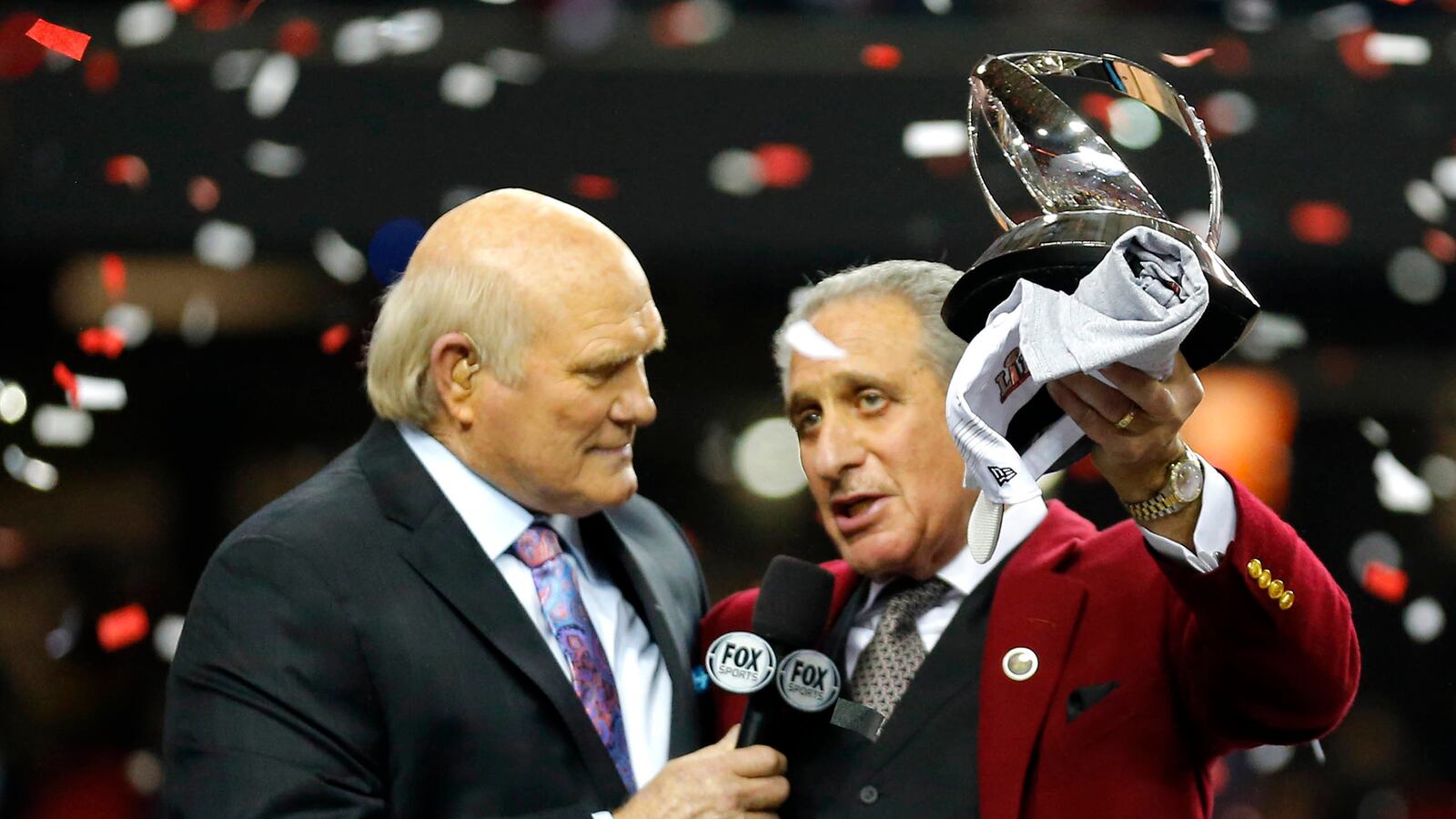For years, Americans have fallen prey to the con of wealthy businessmen who want to build shiny new sports arenas yet don’t want to pay for them. The wealthy propose tax increases on the poor and middle class to pay for their new stadiums, and they claim that new businesses flocking to the area will magically cover the costs. Citizens and municipalities have for far too long believed these baseless claims, paid for the stadium, and watched them lie dormant during the offseason as the new businesses never came. However, the Atlanta Falcons’ new home, Mercedes-Benz Stadium, may foster a new era of stadium construction and community engagement.
The Falcons’ owner, Arthur Blank, the co-founder of Home Depot with a net worth of $3 billion, at first glance certainly fits the bill of your standard billionaire athletic team owner. And the Falcons’ new stadium—scheduled to open this summer—with an estimated cost of $1.5 billion, $200 million coming from Atlanta hotel-motel taxes—is definitely big and shinny with tons of gadgets to enhance the “fan experience.” But this is where the similarities with most other stadiums end.
“Arthur is committed to changing the narrative around sports stadiums,” said Frank Fernandez, the VP of Community Development at The Arthur M. Blank Family Foundation, to The Daily Beast. “Generally speaking they don’t do a lot to lift up the communities and neighborhoods around them. We’re trying to do the exact opposite of that.”
Mercedes-Benz Stadium is located adjacent to the Falcons’ current home, the Georgia Dome, in Atlanta’s Westside. Martin Luther King Jr. once lived in this part of town, but decades of disinvestment and neglect have resulted in over 40 percent of the community living in poverty with an unemployment rate twice that of the rest of Atlanta. If executed improperly, this stadium could continue a long line of broken promises for this blighted community. But thus far Blank and those connected to the stadium appear committed to using this opportunity as one to enhance and not exploit this community.
The Falcons were the first pro football team in the South, founded during the civil rights era in 1965. Prior to the construction of the Georgia Dome they played at Atlanta-Fulton County Stadium with the Atlanta Braves, and you could see the spot where Hank Aaron surpassed Babe Ruth in home runs. We’ve never won a Super Bowl, and this year’s loss in Super Bowl LI was especially hard to take. I, like almost everyone else, had already started celebrating at halftime. Yet the team continues to unite Atlantans during the ups and downs. Michael Vick’s published letter, “Atlanta,” nearly made a whole city cry on the eve of the Super Bowl.
In recent years Atlanta’s sports teams have attracted controversies that have highlighted the racial disparities that still largely define the city. In 2014 it emerged that Bruce Levenson, who owned the NBA’s Atlanta Hawks, had written an email that amongst other things theorized that “the black crowd [at Philips Arena] scared away the whites,” adding for good measure: “I have even bitched that the kiss cam is too black.” Levenson later that year sold his stake in the franchise, and the Hawks have worked hard to win back their black audience.
Additionally in 2014, the Atlanta Braves announced that they were building a new stadium outside the city in the northern suburbs, and leaving Turner Field, which was originally the site of Centennial Olympic Stadium for the 1996 summer games. To many Atlantans, myself included, leaving Turner Field was symbolic of the “white flight” that has defined the city since the 1960s. At the time, Atlanta liked to call itself “The City Too Busy to Hate,” but as more African Americans moved to the city the moniker shifted to “The City Too Busy Moving to Hate,” as more white Atlantans escaped the city to the northern suburbs. I have many friends who are no longer fervent Braves supporters.
The Braves leaving town also represented an end to the multicultural hub in the heart of the city that was forged by those Olympics. The Georgia Dome was also built for the Olympics, and construction for Philips Arena—the Hawks’ home, which sits next door to the Dome and where the previous basketball arena, the Omni Colosseum, once sat—began in 1997. For the last two decades, sports have united this largely racially divided city, and partially due to the actions of the Hawks and the Braves, the Falcons could ill-afford to have a stadium plan that was not only racially inclusive, but also worked to incorporate the surrounding community.
To assist with the effective inclusion of community voices, the city of Atlanta participated in the Living Cities’ City Accelerator program, which streamlined and articulated (PDF) best practices for service providers and community leaders to build stable communities in Atlanta.
And Blank’s role in this project extends beyond the stadium. The family foundation has already invested over $20 million into the surrounding community. Fernandez says that they intend to use the stadium as “an anchoring institution,” and that the number one thing people in the community said they wanted are jobs. Currently, over 200 Westside residents are working on the stadium’s construction and the foundation has funded, among other things, Westside Works to help residents find employment and learn job training skills.
Mercedes-Benz Stadium will also be home to Atlanta’s MLS team, Atlanta United FC. In total, they anticipate hosting each year 40 to 50 big events and an additional 100 to 200 small events in the neighboring park that will be built where the Georgia Dome currently resides. This can create a steady stream of jobs and revenue for the community.
“This isn’t just a short-cut, this is a long-term play with significant input and investment into the community and its future,” said Scott Jenkins, the general manager of Mercedes-Benz Stadium, to The Daily Beast. “And part of that is reducing our environmental impact.”
Mercedes-Benz Stadium aims to be the first stadium to receive LEED Platinum certification. The stadium boasts roughly 4,000 solar panels and will use 70 percent less energy. The Westside also suffers from severe flooding problems, and the stadium has a 1.1 million gallon storm vault underground to trap and reuse their rain water, and help prevent flooding. The Blank foundation also emphasizes environmental sustainability and aims to support programs that foster this message in the Westside.
By all accounts, those associated with the new stadium and the Westside view their presence as at least a 10-20 year commitment toward revitalizing a downtrodden community and bringing the city together. Who knows how successful they’ll be, and many residents worry that economic growth could facilitate gentrification. But staying in the city and trying to work with the community definitely beats the usual stadium construction scam and unwanted racial division that has become far too common in sports today.






